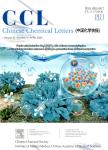Pillararene-based fluorescent sensors for the tracking of organic compounds
Pillararene-based fluorescent sensors for the tracking of organic compounds作者机构:School of Chemistry and Chemical EngineeringSouth China University of TechnologyGuangzhou 510641China Institute of Organic ChemistryUniversity of MainzD-55099 MainzGermany
出 版 物:《Chinese Chemical Letters》 (中国化学快报(英文版))
年 卷 期:2019年第30卷第10期
页 面:1758-1766页
核心收录:
学科分类:081704[工学-应用化学] 07[理学] 08[工学] 0817[工学-化学工程与技术] 070303[理学-有机化学] 0703[理学-化学]
基 金:the National Natural Science Foundation of China (Nos. 21572069, 21772045) the National Key Research and Development Program of China (No. 2016YFA0602900) the Natural Science Foundation of Guangdong Province, China (No. 2018B030311008)
主 题:Pillararene Fluorescent chemosensor Complex Host-guest Fluorescent cavity
摘 要:Fluorescent chemosensors based on pillararene complexes represent a new, promising branch in sensor technology. Because of CH-π interactions, aliphatic chains are well suited for the columnar cavities of pillararenes and bulky or sheet-like(sub)structures can be arranged on the portals. Thus, pillararenes form versatile receptors and an alteration of the fluorescence behavior upon complexation ensures the function of these chemosensors as the reporter. Although this field of research exists only since a few years, remarkable chemosensors were developed for substances as diverse as medical drugs,biochemicals, herbicides and explosives.



